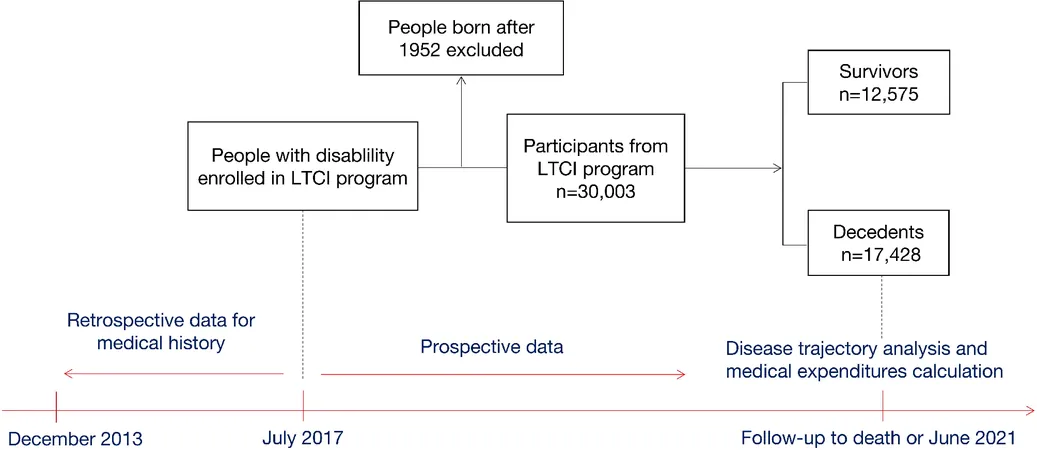
Shocking Insights: The Unseen Health Crisis Among China's Older Disabled Population
2025-05-01
Author: William
A Hidden Epidemic: Disability Among the Elderly in China
China is witnessing a dramatic rise in its elderly population, now accounting for over 190 million individuals aged 65 and above. The urgency to address their healthcare needs is critical, especially as a significant portion face disabilities. Recent research has unearthed alarming patterns linking disease trajectories and escalating medical costs for this vulnerable group.
Research Overview: Investigating Long-Term Care Costs
This groundbreaking study, drawing data from China's Long-Term Care Insurance (LTCI) program, followed over 30,000 disabled adults aged 65 and older from July 2017 until June 2021. Researchers examined the diseases leading to mortality and assessed the financial burdens associated with these conditions.
Shocking Mortality Rates Unveiled!
A staggering 58.1% of participants succumbed to various diseases during the study, with particularly high-risk conditions such as septic shock and respiratory failure leading the fatality charts. Malnutrition also emerged as a silent killer, significantly linked to death rates among the elderly.
What We Found: The Most Dangerous Diseases
The diseases presenting the highest danger included septic shock (HR 3.59), respiratory failure (HR 3.19), and sepsis (HR 2.98). Notably, malnutrition-related diseases and infections were key drivers of mortality and escalating healthcare costs.
The Financial Toll: A Burgeoning Crisis
Apart from alarming mortality rates, the study revealed that hospitalization costs for conditions like intracerebral hemorrhage and sepsis skyrocketed, averaging tens of thousands of Chinese Yuan. This financial burden on families and the healthcare system highlights the urgent need for effective care strategies.
Towards Effective Solutions: Policy Recommendations
The findings emphasize the importance of tailored Long-Term Care Insurance policies that focus on enhancing nutritional support and preventive measures against infections. Strengthening these areas could yield significant improvements in health outcomes for older adults with disabilities.
The Bigger Picture: Implications for the Globally Aging Population
As the world grapples with an aging population, this study serves as a crucial wake-up call. Countries globally must take proactive steps to ensure that older adults receive not just adequate medical care but also essential nutritional and preventive health support, ultimately preserving their dignity and quality of life.









 Brasil (PT)
Brasil (PT)
 Canada (EN)
Canada (EN)
 Chile (ES)
Chile (ES)
 Česko (CS)
Česko (CS)
 대한민국 (KO)
대한민국 (KO)
 España (ES)
España (ES)
 France (FR)
France (FR)
 Hong Kong (EN)
Hong Kong (EN)
 Italia (IT)
Italia (IT)
 日本 (JA)
日本 (JA)
 Magyarország (HU)
Magyarország (HU)
 Norge (NO)
Norge (NO)
 Polska (PL)
Polska (PL)
 Schweiz (DE)
Schweiz (DE)
 Singapore (EN)
Singapore (EN)
 Sverige (SV)
Sverige (SV)
 Suomi (FI)
Suomi (FI)
 Türkiye (TR)
Türkiye (TR)
 الإمارات العربية المتحدة (AR)
الإمارات العربية المتحدة (AR)